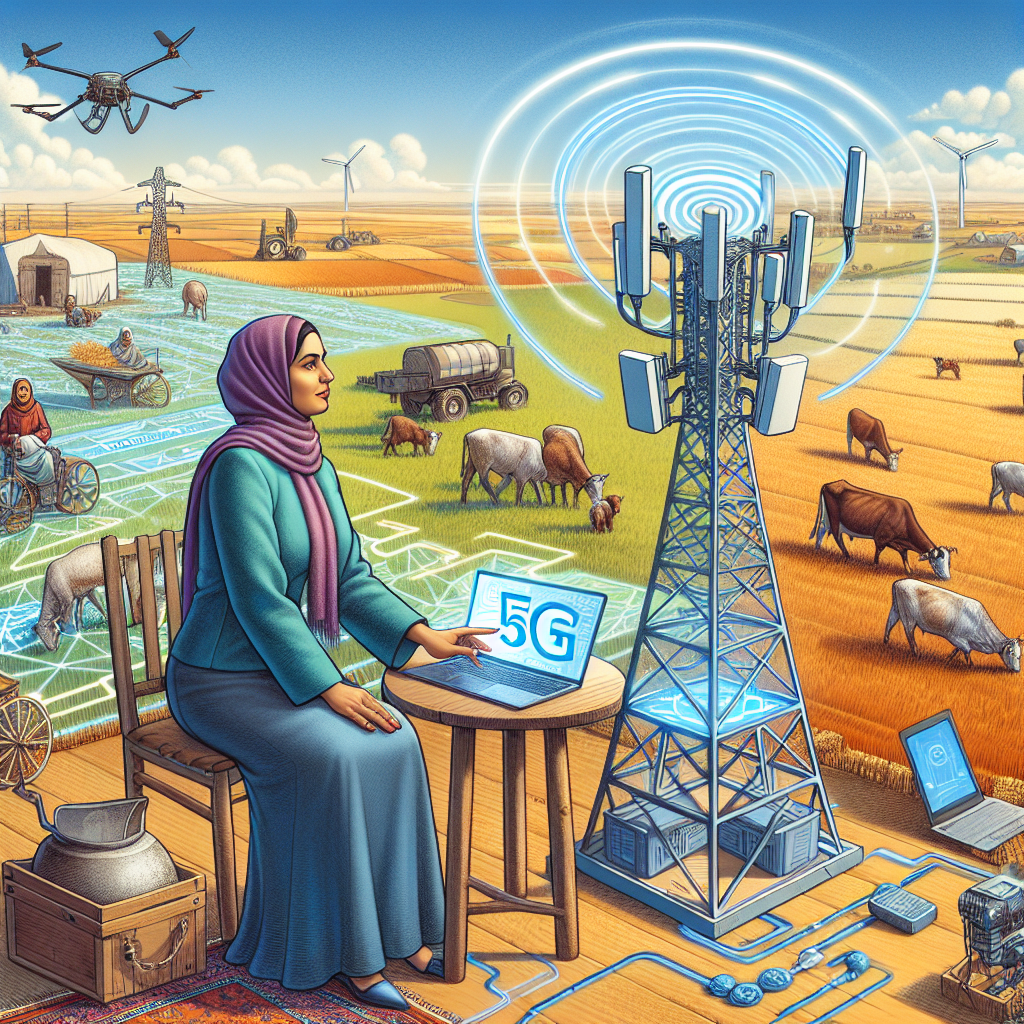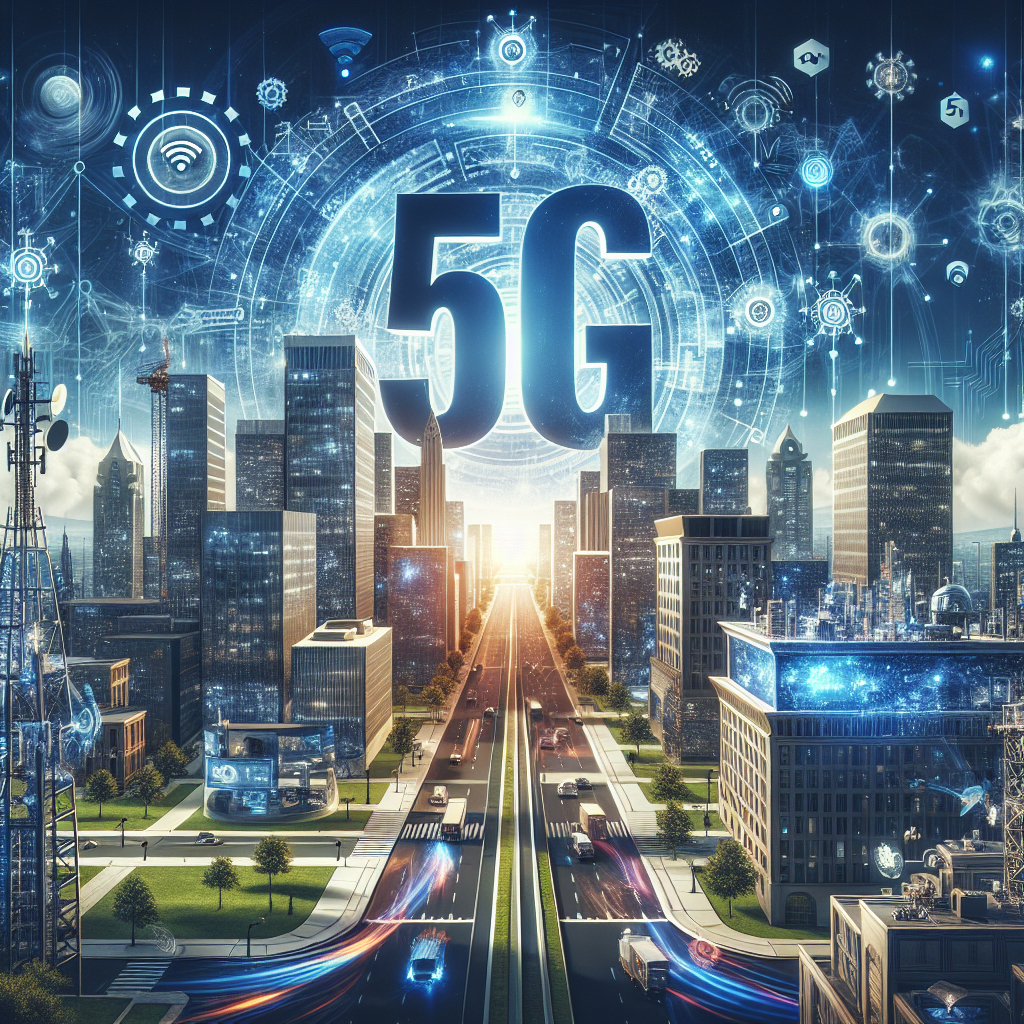In the fast-paced world of technology, the potential of 5G connectivity in bringing rural areas into the digital age cannot be overstated. With its promise of lightning-fast internet speeds and low latency, 5G technology has the power to revolutionize the way we interact and communicate, even in the most remote corners of the world. From enabling seamless video calls and online learning to transforming agriculture with smart farming techniques, the possibilities are truly endless. Join us on a journey as we explore the exciting potential of 5G technology in bridging the digital divide and transforming rural communities for the better.
Understanding 5G Technology
5G technology, the fifth generation of mobile networking, represents a significant advancement in the realm of wireless communication.
What is 5G technology?
5G technology refers to the latest iteration of mobile network connectivity, designed to offer faster data speeds, lower latency, and increased capacity compared to its predecessors. It operates on higher frequency bands, enabling more data to be transmitted at a quicker pace.
How does 5G differ from previous generations of mobile networks?
- Speed: 5G is capable of delivering data speeds up to 100 times faster than 4G networks, allowing for quick downloads and seamless streaming.
- Latency: With reduced latency of around 1 millisecond, 5G enables real-time communication critical for applications like autonomous vehicles and remote surgery.
- Capacity: The higher capacity of 5G networks accommodates a larger number of connected devices simultaneously, supporting the Internet of Things (IoT) ecosystem.
Key features and benefits of 5G technology
- Enhanced Mobile Broadband (eMBB): 5G offers significantly faster speeds, providing users with a more reliable and seamless mobile broadband experience.
- Massive Machine-Type Communications (mMTC): 5G can support a massive number of connected devices, facilitating the growth of IoT applications in various sectors.
- Ultra-Reliable Low Latency Communications (URLLC): Critical for mission-critical applications, URLLC ensures minimal latency and high reliability for tasks that demand instantaneous responses.
Challenges in Rural Connectivity
- Limited Infrastructure: One of the primary challenges in rural connectivity is the lack of adequate infrastructure to support high-speed internet services. Many rural areas do not have the necessary fiber-optic cables or cellular towers to provide reliable connectivity.
- High Costs: Building infrastructure in rural areas can be significantly more expensive than in urban areas due to the vast distances and lower population density. This high cost often deters internet service providers from investing in rural connectivity.
- Limited Access to Spectrum: Rural areas often have limited access to the radio frequency spectrum needed to deliver high-speed internet services. This scarcity of spectrum can result in slower speeds and less reliable connections for rural residents.
- Topographical Challenges: The geographical layout of rural areas, such as mountains, valleys, or dense forests, can interfere with signal transmission and hinder connectivity. This topographical complexity makes it challenging to provide consistent internet access to rural communities.
- Digital Divide: The urban-rural digital divide exacerbates the challenges faced by rural communities in accessing reliable internet services. The disparity in connectivity between urban and rural areas further marginalizes rural residents and hampers their ability to participate fully in the digital economy.
The Role of 5G in Bridging the Connectivity Gap

How can 5G technology improve rural connectivity?
5G technology has the potential to revolutionize rural connectivity by offering faster speeds, lower latency, and increased network capacity compared to previous generations of wireless networks. This means that individuals and businesses in remote areas can enjoy reliable and high-speed internet access, enabling them to participate more effectively in the digital economy. The use of small cells in 5G networks allows for better coverage in rural areas where traditional cell towers may be economically unfeasible. Additionally, technologies like beamforming and massive MIMO enhance signal strength, particularly beneficial in areas with challenging topographies. By leveraging these capabilities, 5G can bridge the connectivity gap and bring rural communities closer to urban centers in terms of digital access.
Implications of 5G for economic development in rural areas
The deployment of 5G in rural areas can have far-reaching implications for economic development. Improved connectivity can attract businesses looking to establish operations in remote locations, as they can now rely on stable and high-speed internet connections for their activities. This, in turn, can lead to job creation, increased productivity, and the emergence of new economic opportunities within rural communities. Furthermore, access to 5G technology can empower local entrepreneurs and small businesses to reach wider markets, expand their customer base, and diversify their offerings. As a result, rural areas can experience a boost in economic growth, reducing the digital divide between urban and remote regions.
Case studies showcasing successful implementation of 5G in rural regions
Several case studies highlight the successful implementation of 5G in rural regions around the world. For instance, in the United Kingdom, the 5G RuralFirst project demonstrated the benefits of 5G connectivity for agriculture, tourism, and healthcare in remote areas. By utilizing 5G-enabled drones for crop monitoring, virtual reality for tourist experiences, and telemedicine services, rural communities experienced enhanced services and improved quality of life. Similarly, in Japan, the deployment of 5G in rural villages helped revitalize local economies by attracting young residents and enabling smart agriculture practices. These case studies illustrate the transformative impact of 5G technology on rural connectivity and its potential to drive innovation and growth in traditionally underserved areas.

Overcoming Barriers to 5G Adoption in Rural Areas
Infrastructure requirements for 5G deployment in rural communities
- Challenges: Rural areas often lack the necessary infrastructure to support 5G technology, such as fiber optic networks and small cell installations.
- Solutions: Implementing government initiatives to fund infrastructure development, partnering with local utility companies for access to existing infrastructure, and utilizing innovative technologies like satellite internet for backhaul connectivity.
Regulatory challenges and policy considerations
- Complexity: Regulatory frameworks can be complex and vary from region to region, posing challenges for 5G deployment in rural areas.
- Approaches: Streamlining regulations, providing incentives for telecom companies to invest in rural connectivity, and engaging with policymakers to address specific barriers can help overcome regulatory challenges.
Strategies to increase 5G accessibility in underserved rural areas
- Community partnerships: Collaborating with local communities to identify needs and prioritize areas for 5G deployment can help tailor solutions to specific rural challenges.
- Public-private partnerships: Engaging with both public and private entities to share resources and expertise in expanding 5G coverage to underserved rural regions.

- Innovative funding models: Exploring alternative funding models, such as grants, subsidies, or public-private investment partnerships, to bridge the financial gap and accelerate 5G adoption in rural areas.
Future Prospects and Innovations in 5G Rural Connectivity
- Potential applications of 5G beyond traditional internet access:
The potential applications of 5G technology in rural connectivity extend far beyond just providing internet access. With its high-speed, low latency capabilities, 5G can enable various services such as telemedicine, precision agriculture, and virtual education platforms in rural areas. This technology can revolutionize how essential services are delivered in remote regions, bridging the digital divide and improving the overall quality of life for rural communities.
- Integration of IoT devices and smart technologies in rural settings:
One of the most significant advancements facilitated by 5G in rural areas is the seamless integration of Internet of Things (IoT) devices and smart technologies. These devices can monitor and optimize agricultural processes, enhance infrastructure management, and enable efficient energy consumption. The high bandwidth and reliability of 5G networks are crucial for supporting the vast network of interconnected devices in rural settings, leading to increased productivity and sustainability.
- Collaborative efforts to expand 5G coverage to remote regions:
Collaborative efforts between governments, telecommunications companies, and other stakeholders are essential to expanding 5G coverage to remote regions. Initiatives such as public-private partnerships, investment in infrastructure development, and regulatory support play a crucial role in ensuring that even the most underserved rural areas have access to 5G connectivity. By working together, these entities can create a more inclusive and connected rural landscape, unlocking new economic opportunities and improving the overall well-being of rural populations.
Empowering Rural Communities Through 5G Technology
In rural areas, the implementation of 5G technology has the potential to revolutionize the way communities access education and skill development opportunities. With improved connectivity, individuals in remote areas can now participate in online courses, workshops, and training programs that were previously inaccessible. This increased access to educational resources can bridge the gap between rural and urban areas, empowering individuals to acquire new skills and knowledge that can enhance their employability and overall quality of life.
Furthermore, the healthcare sector stands to benefit significantly from the advancements brought about by 5G technology in rural communities. Through telemedicine services and remote monitoring capabilities, healthcare providers can now reach patients in remote areas more efficiently. This means that individuals living in rural communities can receive timely medical consultations, access specialist care, and receive continuous monitoring without the need to travel long distances. The implementation of 5G technology in healthcare can lead to improved health outcomes, reduced healthcare costs, and overall better access to quality medical services for rural populations.
In addition to education and healthcare, the social impact of 5G technology on the quality of life in rural areas cannot be overlooked. Enhanced connectivity can facilitate better communication, social interaction, and community engagement. By enabling seamless video calls, instant messaging, and social media access, 5G technology can help combat feelings of isolation and disconnection that are often experienced in rural communities. This improved social connectivity can foster a sense of belonging, strengthen community ties, and enhance overall well-being among rural residents.
FAQs: Exploring the Potential of 5G Technology for Rural Connectivity
What is 5G technology and how does it differ from previous generations of wireless technology?
5G technology is the latest generation of wireless communication technology that promises faster speeds, lower latency, and increased capacity compared to previous generations. It utilizes higher frequency radio waves and advanced network architecture to provide better connectivity and support a wider range of devices and applications.
How can 5G technology benefit rural areas in terms of connectivity?
5G technology has the potential to dramatically improve connectivity in rural areas by providing faster internet speeds, enabling better coverage in remote locations, and supporting a greater number of connected devices. This can enhance access to essential services such as telemedicine, education, and e-commerce, as well as boost economic development and social inclusion in rural communities.
What challenges do rural areas face in adopting 5G technology?
Rural areas may face challenges in adopting 5G technology due to factors such as limited infrastructure, high deployment costs, and regulatory barriers. In addition, the sparse population density in rural areas may make it less economically viable for network operators to invest in upgrading to 5G technology compared to urban areas.
How can policymakers and stakeholders support the implementation of 5G technology in rural areas?
Policymakers and stakeholders can support the implementation of 5G technology in rural areas by providing financial incentives, reducing regulatory obstacles, and promoting public-private partnerships. By investing in infrastructure and facilitating collaboration between industry players, governments can help bridge the digital divide and bring the benefits of 5G technology to rural communities.
What are some examples of successful 5G deployments in rural areas?
While 5G technology is still being rolled out in many rural areas, there are already some successful deployments that showcase its potential. For instance, some rural communities have used 5G technology to improve agricultural practices, enable remote monitoring of infrastructure, and deliver high-speed internet access to underserved regions. These initiatives demonstrate the transformative impact that 5G technology can have on rural connectivity and development.


